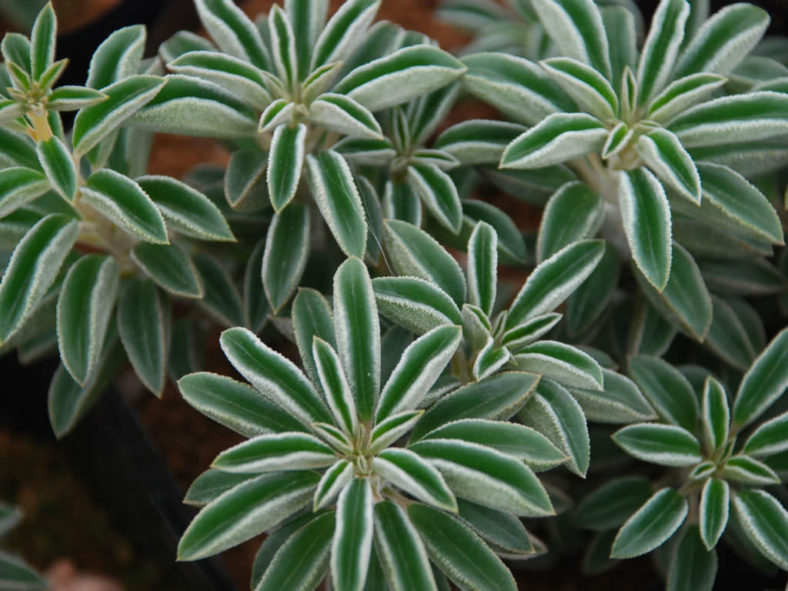Peperomias are attractive and relatively easy plants to grow. They are native to South American rain forests, where they grow happily in the loamy, dappled light, cool understory of the rain forest. These plants have all the features we look for in houseplants: variability, interesting leaves, and tolerance for a relatively wide range of conditions.
Growing Conditions
Light: Peperomias do well in bright to moderate light. They can be easily grown under grow lights.
Water: Spray or set the pot in a gravel tray to keep the soil moist during the growing season and provide relatively high humidity.
Temperature: Peperomias do well in most homes' relatively cool environments (although they dislike the dry). Aim for 65 to 75 ˚F (18 to 24 ˚C).
Soil: A well-drained but nutrient-rich potting mix.
Fertilizer: Apply diluted liquid fertilizer every two weeks during the growing season or use controlled-release fertilizer pellets at the beginning of the growing season.

Repotting
Peperomias thrive when slightly pot-bound, so do not overpot them. Repot plants in spring, especially to refresh the existing soil, but place either back into the same size container after root-pruning or only one pot size. The largest Peperomias remain relatively small and will never grow into large specimen plants.
Propagation
Most Peperomias can be relatively easily propagated from leaf cuttings. Remove large leaves with their stalks and bury them in the seedling-starting soil mix. Using a rooting hormone can increase the odds of success. Place the cutting in a warm, bright place until new growth emerges.
Grower's Tips
Peperomias are not particularly hard plants to grow, and their small size and delicate leaves make them perfect for desktops and dish gardens. They will rarely overtake their neighbors or shade them out. In short, they are perfectly mannered and attractive little plants. The biggest problem facing Peperomias is usually related to watering. They like steadily moist soil but can be very sensitive to overwatering. Overwatered Peperomias tend to wilt or have raised, scab-like protrusions on their leaves. Do not be alarmed if your plant loses a few bottom leaves, but a massive leaf drop is usually due to a temperature change or fertilizer problem. Lastly, Peperomias are susceptible to mealybugs, so keep an eye out for cottony white masses on the stems and leaves undersides.
Source: about.com
Links
- Back to genus Peperomia
- Succupedia: Browse succulents by Scientific Name, Common Name, Genus, Family, USDA Hardiness Zone, Origin, or cacti by Genus